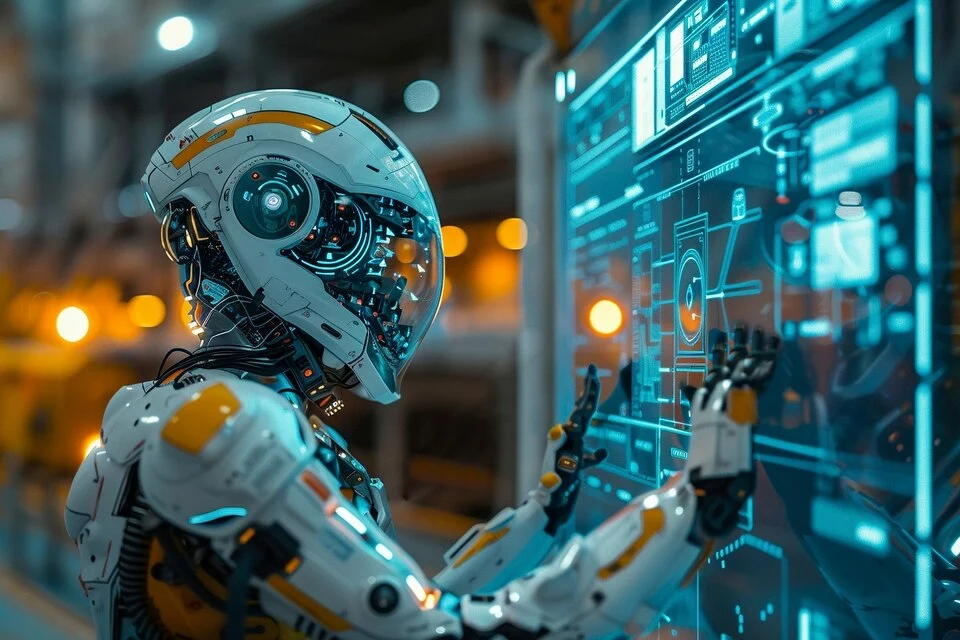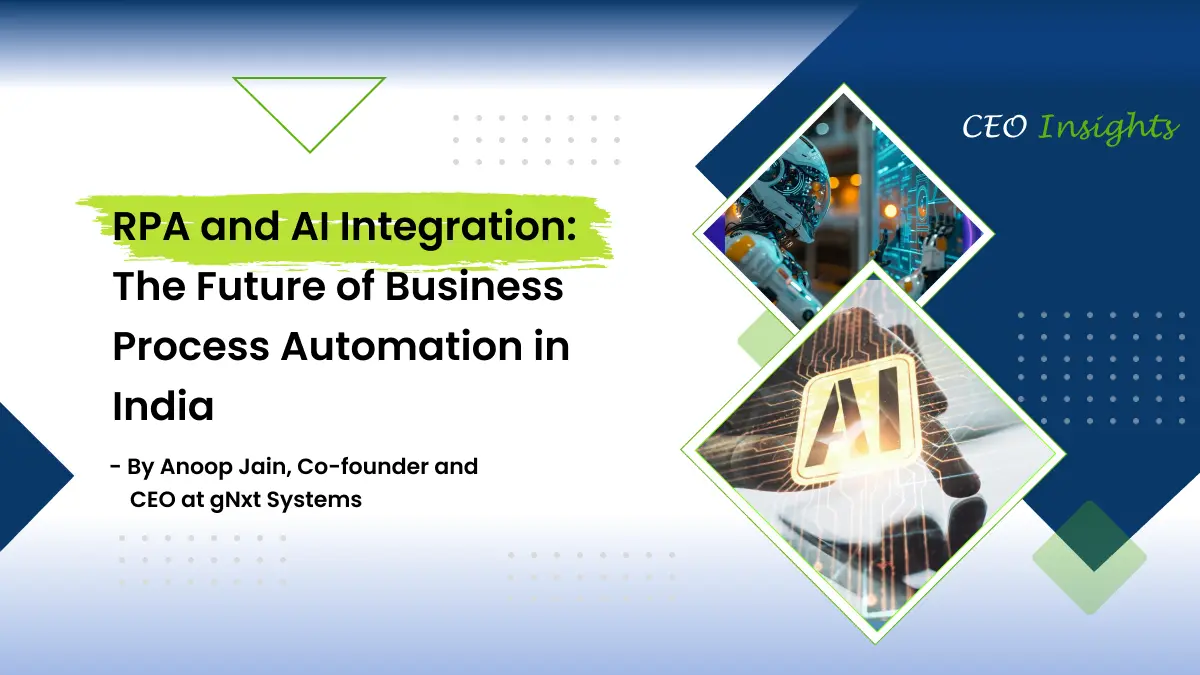- May 23, 2025
- by gNxt Systems
RPA and AI Integration: The Future of Business Process Automation in India
As Indian enterprises accelerate digital transformation, Robotic Process Automation (RPA) and Artificial Intelligence (AI) are converging to redefine how business processes are managed, optimized, and scaled. The integration of RPA with AI represents a paradigm shift—from rule-based task automation to intelligent decision-making and adaptive workflow management.
India, home to a robust IT services industry and a thriving startup ecosystem, is uniquely positioned to lead in this domain. As organizations move beyond traditional automation, RPA + AI integration is becoming the cornerstone of intelligent enterprise operations, enabling businesses to unlock productivity, reduce operational costs, and achieve agility at scale.
What is RPA + AI Integration?

RPA (Robotic Process Automation) automates repetitive, rules-based tasks using software bots. AI (Artificial Intelligence) empowers systems to simulate human intelligence, enabling them to learn, interpret, and adapt over time.
When combined, RPA and AI transform automation from static task execution into cognitive automation. For example:
- OCR + RPA: AI-powered Optical Character Recognition (OCR) extracts data from documents, while RPA inputs it into ERP systems.
- NLP + RPA: Natural Language Processing enables bots to interpret emails, voice commands, or support tickets.
- ML + RPA: Machine learning models analyze large datasets to support predictive decision-making, while RPA executes corresponding actions.
Why RPA + AI Matters for Indian Enterprises
India’s business environment is marked by operational complexity, legacy systems, regulatory demands, and intense cost pressures. Here’s why integrating AI with RPA is crucial:
1. Scalability and Efficiency
Traditional RPA hits scalability bottlenecks when dealing with unstructured data or dynamic workflows. AI extends its capabilities to handle complex, judgment-based processes.
2. Compliance and Risk Management
AI models improve fraud detection, anomaly identification, and regulatory compliance monitoring. RPA ensures consistent execution of these controls.
3. Hyperautomation Readiness
The RPA + AI combo forms the backbone of hyperautomation—Gartner’s top strategic tech trend. It enables end-to-end automation across departments and functions.
4. Enhanced CX (Customer Experience)
AI-powered chatbots integrated with RPA can resolve service requests, update CRMs, and trigger backend workflows instantly, leading to faster and smarter support.
5. Cost Optimization for MSMEs
As RPA tools become more affordable and AI models more accessible, even Micro, Small, and Medium Enterprises (MSMEs) in India can leverage intelligent automation to stay competitive.
Use Cases Across Industries in India
Industry | Use Case |
Banking & Finance | Automating KYC, fraud detection, loan processing |
Manufacturing | Inventory forecasting, quality inspection, supply chain automation |
Healthcare | Claims processing, patient data management, diagnostic assistance |
Retail & E-commerce | Customer support, product recommendations, returns processing |
Insurance | Policy issuance, underwriting, claims adjudication |
What Top RPA Consulting Companies in India Say
India is home to several leading RPA consulting firms that have been early adopters and champions of AI integration:
1. gNxt Systems
As a digital transformation partner to manufacturing and services firms, gNxt Systems emphasizes the value of AI-driven RPA in achieving process agility. “Our clients are increasingly adopting cognitive automation to digitize legacy workflows, especially in sectors like auto-components, electronics, and logistics,” says the gNxt Consulting team.
2. Tata Consultancy Services (TCS)
TCS highlights that combining AI and RPA is essential for resilient enterprise operations. In its latest report, TCS notes: “Cognitive automation enables real-time decision-making across supply chains and financial operations.”
3. Infosys
Infosys has developed AI-powered platforms that integrate with RPA to streamline enterprise ecosystems. They emphasize the need to co-create automation strategies with clients for scalable outcomes.
4. EdgeVerve (an Infosys subsidiary)
EdgeVerve’s AssistEdge platform demonstrates how AI+RPA can drive contextual automation for banking, insurance, and telecom sectors.
5. Happiest Minds
Known for its agile approach, Happiest Minds shares that AI-infused RPA improves customer journeys and reduces turnaround time by over 40% in key enterprise functions.
Challenges and Considerations
Despite the promise, Indian enterprises must navigate:
- Data privacy concerns and AI governance
- Legacy infrastructure compatibility
- Skilled workforce shortages in AI and data science
- ROI justification for long-term investments
Overcoming these challenges requires strategic partnerships, robust change management, and investing in capability-building.
The Road Ahead
The convergence of RPA and AI is not a trend but an inevitable future. Indian enterprises that adopt early stand to gain:
- Faster time-to-market
- Enhanced operational intelligence
- Greater customer loyalty
- Competitive advantage on a global scale
At gNxt Systems, we are committed to helping businesses across India embrace intelligent automation through scalable, secure, and industry-specific RPA+AI solutions.
Final Thoughts
The future of business process automation in India lies at the intersection of intelligent decision-making and efficient execution. With AI-enhanced RPA, organizations can leap from automation to autonomy.
Whether you’re a manufacturing powerhouse or a fast-growing startup, embracing this integration will be key to unlocking next-generation productivity.
Contact gNxt Systems today to explore how your business can benefit from tailored RPA + AI solutions.
Read this blog by gNxt Systems. It might interest you: What is Hyperautomation?
About Author

gNxt Systems is an IT professional services and product development company that follows Agile and Rapid development methodologies.


